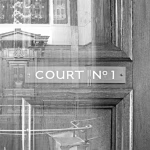In recent years, the issue of debt collection enforcement has come under increasing scrutiny. The rise in business bankruptcies, personal insolvencies, and outstanding consumer debt has brought the practices of bailiffs and High Court Enforcement Officers (HCEOs) into the spotlight. A key development in debt recovery has been the growing use of High Court Enforcement Officers, as businesses and individuals alike seek more effective ways to recover unpaid debts. However, despite their similar roles in enforcement, bailiffs and HCEOs operate under different systems, with different powers and responsibilities.
Recent news has highlighted the strain that the current economic climate has placed on both consumers and businesses. The latest insolvency statistics show a marked increase in the number of businesses collapsing, leaving creditors scrambling to recover money owed to them. While the pressure to recover debts has never been higher, knowing which enforcement agent to choose is crucial for ensuring the best chances of successful debt recovery.
Bailiffs: The Basics
Bailiffs, also known as enforcement agents, are people authorised to carry out enforcement on behalf of a creditor to recover a debt following a County Court Judgment (CCJ). They work under the jurisdiction of the County Court system and are governed by the Tribunals, Courts, and Enforcement Act 2007, which set out the framework for enforcement agents in England and Wales.
Bailiffs primarily have two distinct roles: the recovery of money following a CCJ and the enforcement of orders for possession (such as evicting tenants). When a debtor fails to comply with a CCJ, the creditor can request that a bailiff takes enforcement action to recover the owed amount. The most common form of enforcement is the Warrant of Control, which allows bailiffs to seize goods from the debtor’s property to cover the debt.
Bailiffs are required to give notice of their intention to visit a debtor, providing an opportunity for the debtor to pay the debt in full or enter into a repayment plan. Should this not happen, the bailiff can seize and remove goods for sale at auction. However, there are limits on what bailiffs can seize. For instance, they cannot take essential household items, such as clothing, tools used for work, and items belonging to third parties.
High Court Enforcement Officers: A Higher Level of Enforcement
High Court Enforcement Officers (HCEOs) are licensed professionals who operate under the jurisdiction of the High Court. Unlike bailiffs, who enforce judgments made by County Courts, HCEOs have the authority to enforce judgments that have been transferred to the High Court. Typically, a creditor will transfer a County Court Judgment (CCJ) to the High Court for enforcement if the amount owed exceeds £600. HCEOs have a wider remit, including the ability to recover larger debts and employ more aggressive enforcement tactics.
The most common method of enforcement used by HCEOs is the Writ of Control, which grants them the authority to seize goods from the debtor’s property. Unlike bailiffs, HCEOs have the power to act with fewer restrictions, and they are often seen as a more effective tool for debt recovery. This is particularly true when the debtor is a business or when a debtor’s assets are more difficult to locate. HCEOs have access to advanced resources, such as asset tracking and financial databases, which can help them identify assets that might otherwise be hidden.
Furthermore, HCEOs are empowered to seize goods and sell them at auction to cover the debt, just like bailiffs. However, one of the key advantages of using HCEOs is their ability to enforce actions with more authority. This includes carrying out actions like applying for Third Party Debt Orders (which freeze a debtor’s bank accounts) or Charging Orders (which secure the debt against property). HCEOs can also assist creditors in recovering debts in cross-border cases, making them especially useful in more complex or high-value cases.
Key Differences Between Bailiffs and High Court Enforcement Officers
1. Jurisdiction and Court System
The primary difference between bailiffs and High Court Enforcement Officers lies in the court system under which they operate. Bailiffs act on behalf of County Courts, which are responsible for issuing County Court Judgments (CCJs). In contrast, HCEOs are authorised to enforce judgments that have been transferred to the High Court, typically for debts exceeding £600.
While bailiffs can only enforce County Court judgments, HCEOs have jurisdiction to enforce both County Court and High Court judgments, offering a broader scope of enforcement. Therefore, an HCEO is typically sought when the debt is large or when there is a need for more robust enforcement tactics.
2. Powers of Enforcement
Bailiffs and HCEOs differ significantly in their powers of enforcement. While both have the authority to seize goods and carry out evictions, the enforcement powers of HCEOs are more extensive. For example, High Court Enforcement Officers can issue Writs of Control to seize a wider range of assets, whereas bailiffs are more limited in what they can take. HCEOs also have the ability to apply for more complex enforcement actions, such as Charging Orders and Third-Party Debt Orders, which can secure debt against the debtor’s property or freeze their assets.
Moreover, High Court Enforcement Officers can operate across England and Wales with greater flexibility, including in instances where the debtor is a business or corporation. In contrast, bailiffs are often limited to the local jurisdiction of the County Court and may struggle with complex cases involving businesses with multiple assets spread across various locations.
3. Training and Expertise
High Court Enforcement Officers undergo more extensive training and certification compared to bailiffs. The expertise required to handle complex cases, particularly in enforcement against businesses or high-net-worth individuals, means that HCEOs are often better equipped to deal with sophisticated debtors. HCEOs can use advanced systems to trace assets, enforce complex enforcement actions, and deal with more difficult debt recovery cases.
Bailiffs, by contrast, are generally trained to deal with more straightforward cases. While they are certainly capable of handling basic debt recovery situations, they may not have the expertise or resources to tackle larger or more complicated enforcement cases.
4. Costs and Fees
When it comes to fees, both bailiffs and High Court Enforcement Officers charge for their services, but the cost structures are different. Bailiffs are generally less expensive to hire for low-value debts. However, they may be less effective in cases where the debt is higher or where the debtor is attempting to avoid payment. HCEOs tend to charge higher fees for their services, but the added cost is often justified by their ability to recover larger amounts or deal with more complex cases.
The fees for both enforcement methods can vary depending on the nature of the case, but High Court Enforcement Officers tend to charge a premium for their more advanced enforcement techniques and broader remit.
5. Enforcement Speed
In general, High Court Enforcement Officers are known for their ability to recover debts quickly. Due to their more aggressive enforcement tactics and higher powers, HCEOs can often seize goods or freeze assets more rapidly than bailiffs. This is particularly important when a creditor is facing financial strain and needs to recover money quickly.
Bailiffs, on the other hand, may take longer to execute enforcement, particularly when the debtor is uncooperative or has hidden assets. The County Court system can also be slower, particularly in cases where the debtor challenges enforcement actions.
Conclusion: Choosing the Right Enforcement Agent
The choice between bailiffs and High Court Enforcement Officers depends on several factors, including the amount of debt, the debtor’s willingness to comply, and the complexity of the case. While bailiffs are still an essential part of the debt recovery process, particularly for smaller debts or more straightforward cases, High Court Enforcement Officers offer a more aggressive and comprehensive approach, making them the preferred option for higher-value debts or when other enforcement methods have failed.
In light of the increasing number of business insolvencies and financial strain, creditors are increasingly looking for more effective and efficient enforcement options. High Court Enforcement Officers are becoming the go-to choice for those who need to recover larger sums, or when dealing with complex debt recovery situations. While bailiffs still play a significant role in enforcement, it is likely that their use will become more limited as businesses and individuals seek out the more powerful and effective enforcement options offered by High Court Enforcement Officers.


